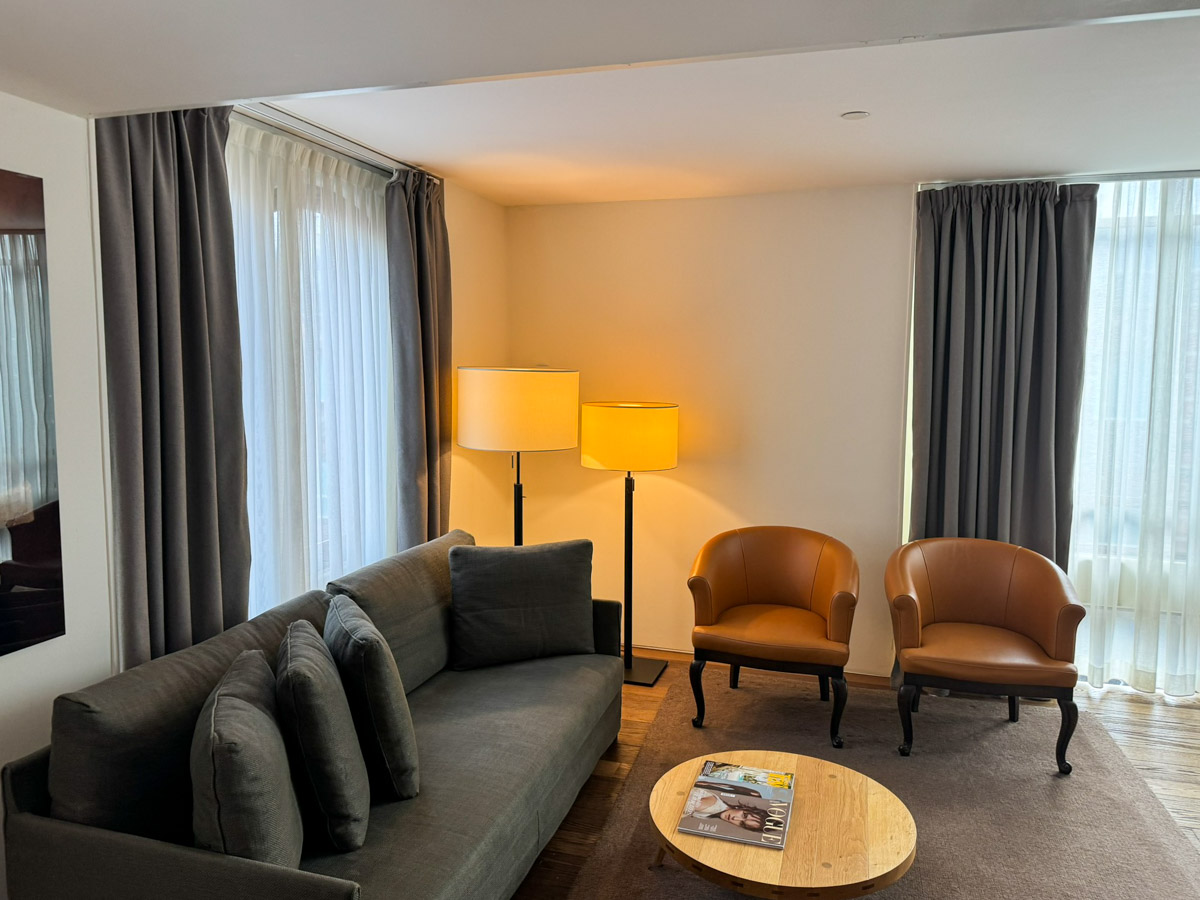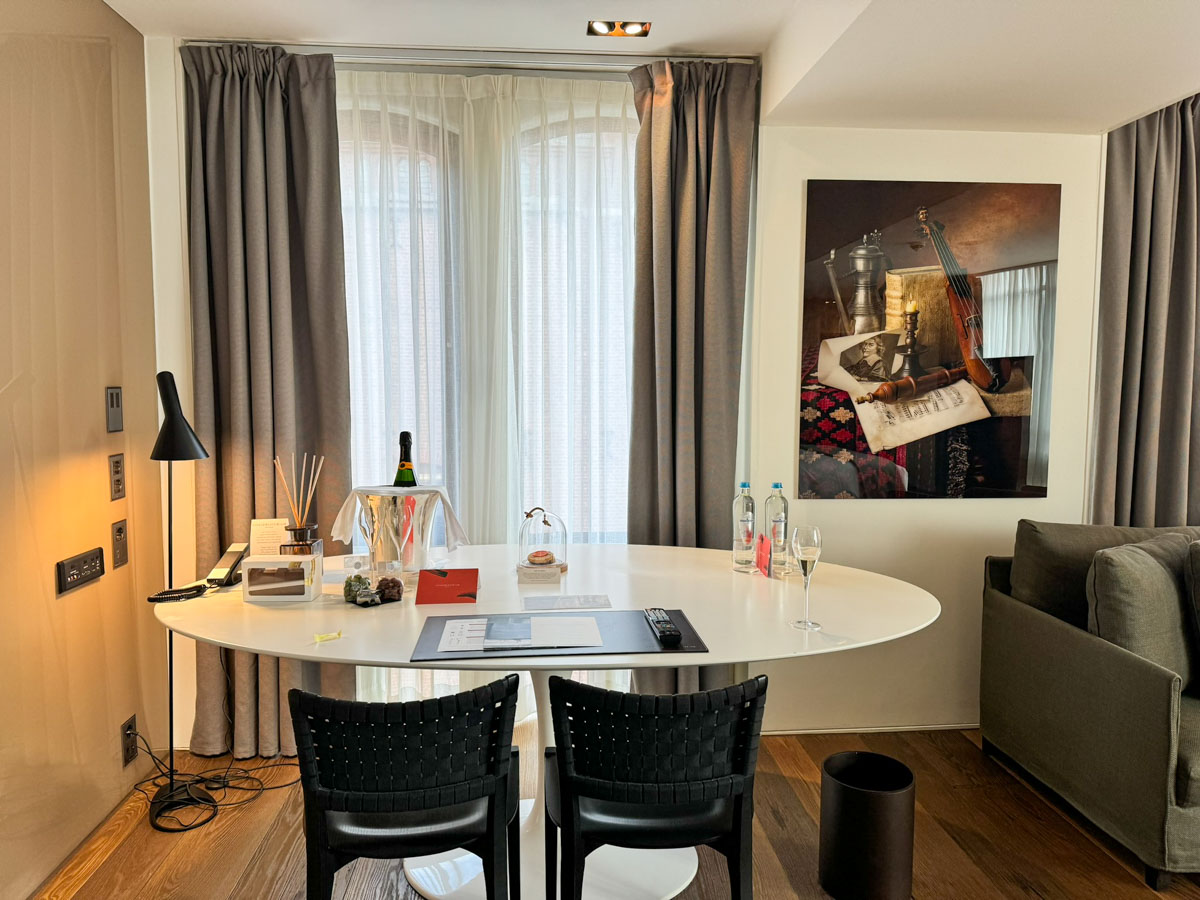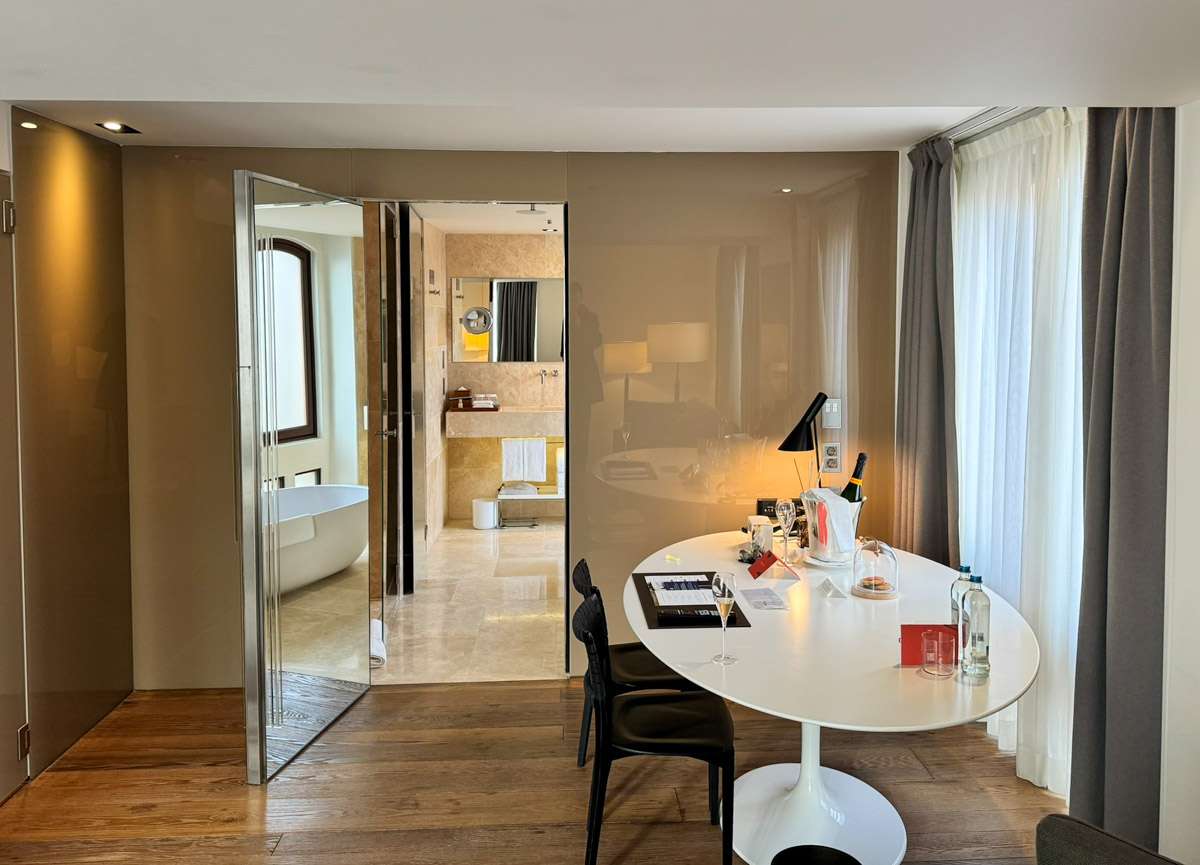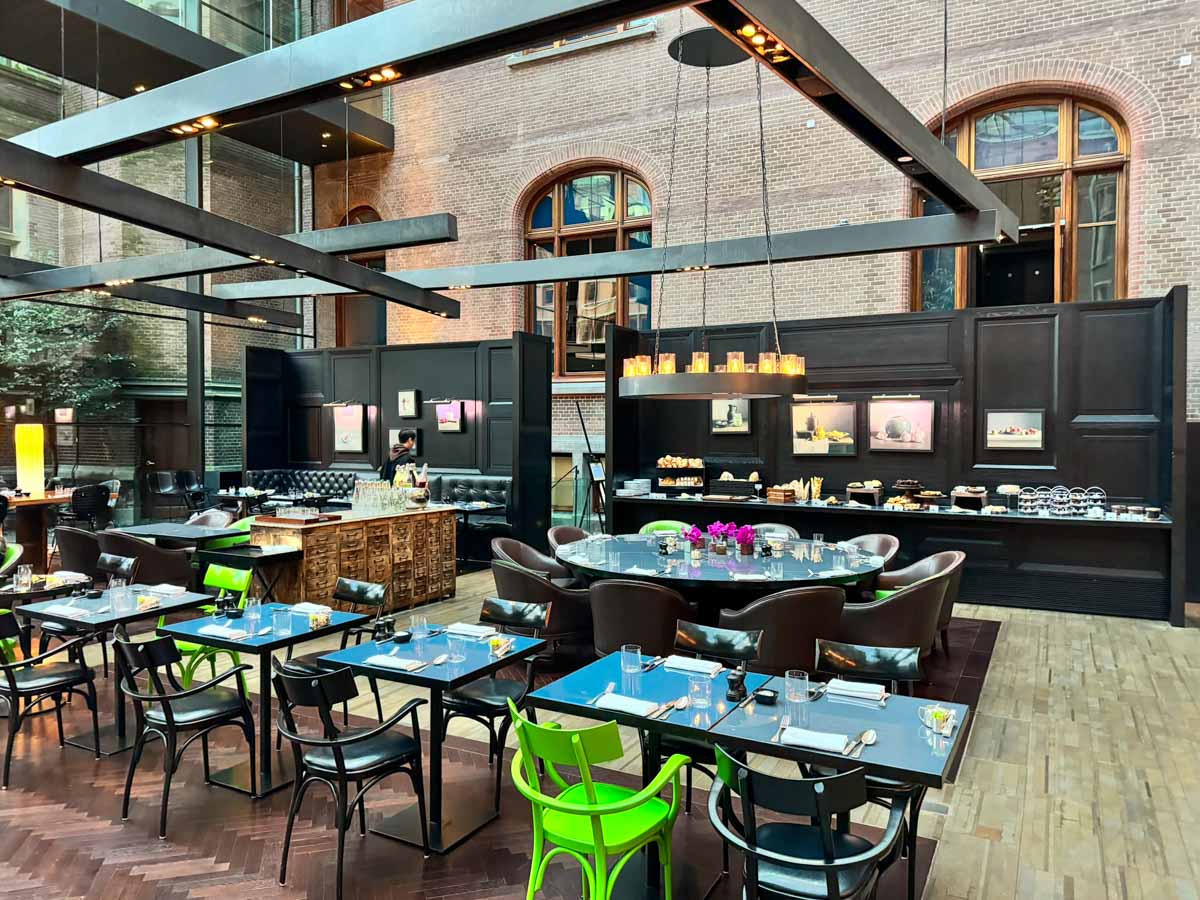Review: The Conservatorium hotel, Amsterdam (Global Hotel Alliance / The Set Collection)
Links on Head for Points may support the site by paying a commission. See here for all partner links.
This is our review of the Conservatorium hotel in Amsterdam, part of The Set Collection of independent hotels.
After enjoying a night in the Hotel Cafe Royal in London I couldn’t say no when The Set Collection invited me to try their sister property in Amsterdam.
In many ways the hotels are remarkably similar – conversions of beautiful historic buildings, architectural design features with subterranean spas built in prime locations of the city. You wouldn’t blink an eye staying here after staying at the Hotel Cafe Royal, although you might at the pricing.
The Set Collection also includes Hotel Cafe Royal in London and Hotel Lutetia in Paris which Rob reviewed last weekend.
All three hotels are members of the Global Hotel Alliance loyalty programme – click here for our guide to GHA.
The Conservatorium website is here.
Where is the Conservatorium Hotel?
A lot of hotels in Amsterdam are located in the city’s historic canal district. Not so the Conservatorium, which is located just off Museumsplein, the city’s major museum district and home to the Rijksmuseum (Old Masters), the Van Gogh Museum and the Stedlijkmuseum (modern art).
Whilst you are not within the canal district itself, you are just a short walk away – it’s literally down the street, on the other side of the Rijksmuseum.
The location is no better or worse than the canals – just different. If you want to go shopping then it is arguably better – Hermes, Cartier, Louis Vuitton etc are less than five minutes’ walk away on Pieter Cornelisz Hooftstraat. It is just as easy to roll out of bed and hit the museums in the morning before they get too busy, too.
The area is also exceptionally easy to get to from the airport. Most people who stay at the Conservatorium are likely to just grab an Uber, taxi or private hire car. It is just as easy and fast to hop on Bus 397 from Schiphol (make sure to tap on and off) which takes you directly to Museumsplein. From there, it is literally 100m down the road. The whole thing takes about 35 minutes.
When it comes to getting round, you have Museumsplein station for buses and trams, or you can soak up the views and walk into town.
Inside the Conservatorium hotel
This is an old part of the city, although not quite as old as many of Amsterdam’s 17th century canal houses, and was developed in the late 19th century.
The landmark neo-gothic Conservatorium building was originally built in 1901 for the Rijkspostspaarbank before becoming a home to the Sweelinck Conservatory of Music. The building itself is reminiscent of St Pancras in London, albeit a bit more stout and not quite as intricate.
Inside the front of the building you’ll find a mini-mall of high-end boutiques selling shoes, fragrances and the like. These were surprisingly busy and clearly popular with locals, rather than just hotel guests.
To get to the lobby, simply walk around the hanging violins and down into the main courtyard:
In 2011 the building was transformed into a hotel with the addition of an ultra-modern glazed courtyard designed by Italian architect Piero Lissoni. It is quite spectacular:
A glass box appears to float above in the centre and is home to a number of function rooms.
Check-in is on the left and was quick and easy.
I was offered a glass of champagne and I admired the collection of service bells (and what I assume is a cowbell!)
Once everything was sorted I was asked if I wanted to be escorted to my room. I declined which was a mistake, because my room was one of two on a mezzanine on the third floor, tucked away in the corner of the building. Thankfully, a member of staff came to my rescue.
On your way you can admire some of the lovely heritage tiling:
Room numbers are really quite discreet, inlaid into the stone doorsill:
Suites at the Conservatorium hotel
I was given a so-called ‘Grand Junior Suite’ at the hotel. At 55sqm, it is more than double the size of the smallest room types which are 23sqm. Looking on the website, the layout of this suite type can vary and occasionally includes open-plan duplex rooms. Mine, however, was a conventional corner suite:
Immediately on the left is an open walk-in wardrobe, with access from both sides. A backlit panel of milky glass emits a lovely warm glow. I wish I had this at home! (As an aside, my luggage arrived very quickly – virtually the same time as I arrived in my room, which was great.)
On the other side of this is the king bed, with an armchair and reading light in the corner:
The bed was lovely and comfortable. There are ample sockets on both sides, as well as controls for the lights and the curtains, which are electric.
There is a free-standing TV opposite the bed which reminded me of the monolith at the start of 2001: A Space Oddysey. It can be turned on its base. Annoyingly, it wasn’t smart and we weren’t able to airplay anything form our iPhones which was a little annoying.
The view from my room was of the Stedelijk Museum:
On the other side is a corner set up with a sofa and two chairs:
Copies of Vogue, GQ and Conde Nast Traveller were available.
Next to the sofa is a large, oval dining table / desk, and there is a plethora of sockets and input/output ports on the wall next to it.
and
The mini bar and fridge are integrated into the headboard/wardrobe unit:
The mini bar was fully stocked with a range of alcoholic and soft drinks, snacks and the like. The coffee machine was Nespresso. There were no tea bags as far as I could tell.
The bathroom is behind a mirrored door and is clad in lovely travertine stone.
There’s a large free standing tub:
Forget twin basins – this bathroom features a wide basin as long as the entire back wall:
The toilet and shower are in separate cubicles. Toiletries throughout are by Etro.
I couldn’t fault the suite, bar the TV which can’t stream or airplay content from other devices. It is spacious, comfortable and stylish, with warm, natural finishes in wood and stone contrasted with glossy beige-brown panelling and mirror doors. The room controls are intuitive and practical – no fumbling with the AC or light switches in the middle of the night here. It all makes sense.
A turn-down service comes every evening to prepare for the room for the night and close all the curtains, which I always appreciate. They leave a little card on the bed with tomorrow’s forecast and two prosecco-flavoured gummy sweets.
The spa at the Conservatorium hotel
One of the highlights with staying at the hotel is the spa, which is underneath the glass-clad modern courtyard. This is operated by Akasha, as is the spa at Hotel Lutetia in Paris. There is a pool with a dedicated lane for swimming laps, as well as a hot tub, hammam and sauna:
There were always around 5-10 people around when I visited. Unfortunately, there just aren’t quite enough loungers: just five, plus another four padded chairs.
Breakfast & Taiko dinner
Breakfast is served in the Conservatorium Brasserie, which is the main restaurant in the glass atrium of the hotel. It is a stunning venue and wonderfully light in the morning thanks to the glass roof:
Breakfast is a hybrid. For a reassuringly expensive €52, you can help yourself from the buffet and opt for one of the a la carte options, which include omelettes, eggs benedict / florentine / royale etc. Of course, I went for the eggs royale which I have to admit were the best I’ve had in months:
The buffet spread is impressive too, and beautifully presented. A whole side is dedicated to pastries, breads, rolls and other baked goods:
Another section was home to a colourful selection of cut fruit, yoghurt, salad and cold cuts:
Overall, I thought the selection was good without being ludicrously over the top as you’d find at a Dubai brunch, and the quality was all very high. The only thing missing, I thought, was sparkling wine, which you have to pay extra for.
Taiko
The hotel also invited us to try their upmarket asian fusion restaurant Taiko, which was buzzing on a Friday night. Once you check in for your reservation your arrival is ‘drummed in’ by a drummer on the corridor down to the dining room, which adds a bit of drama to the affair!
The room is very moody:
Every year, apparently, the restaurant hones in on a particular ingredient and this year it is the ‘Year of Rice’. We tried the eight-course tasting menu (€135pp). Wine pairings (€85pp) and sake pairings (€95pp) are also available.
I won’t bore you with every dish, except to say that they were all delicious and beautifully presented. The only comment I do have is that some of the dishes – the two ‘main’ courses, fish and meat – took a little too long to come out. We spent over three hours here – a delightful three hours – but three hours nonetheless.
The sushi was spectacular:
As was, to my surprise, the deconstructed nasi goreng:
The wagyu four ways was also delicious, and comes raw (tartar), grilled, braised, and as a gyoza:
Two desserts were on offer. I was blown away by the genmaicha ice, which came with dried citrus and other bits and lots of liquid nitrogen!
Conclusion
As you would hope for a hotel of this calibre (and price), my stay at the Conservatorium hotel was virtually faultless. The only two catches were a mix-up at breakfast one morning and the lack of any airplay or casting on the room TV – a bit of a oversight in this day and age.
The rooms, and indeed the hotel as a whole, embrace the heritage of the building whilst not being afraid to reinvent and modernise key areas. I particularly loved having breakfast in the stunning modern atrium: a reminder every morning that we were in the middle of Amsterdam.
None of this comes cheap, of course. Rooms at the Conservatorium Hotel start from €750 for a standard, entry level room. You can expect to pay more at peak times, whilst my suite starts from €850 / night. You will earn Discovery Dollars in Global Hotel Alliance from your stay – up to 7% back depending on your status – and can also redeem here.
































 Rob
Rob 







Comments (32)